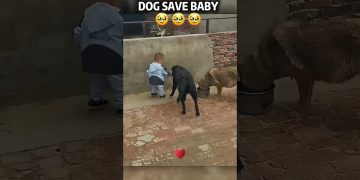
With the European Commission set to revise all of its legislation related to animal welfare, it must consider an essential tool that has been largely underutilised to this point: the Common Agricultural Policy (CAP).
While this policy may sound dry, it actually has huge potential to significantly improve the welfare of farm animals. It affects how all farms are run across the EU, and sets important standards and benchmarks for farmers to follow. If animal welfare were to feature more strongly in the CAP, it could really change the game for animal protection.
Since its inception in 1962, the CAP has been rolled out in fixed periods, with the possibility to be adapted and improved at regular intervals. As the biggest recipient of EU funding, it provides several channels by which farmers can receive financial support, such as through various programmes and schemes, as well as through each Member State’s CAP Strategic Plans (CSPs). As recipients of CAP funding, each Member State in the EU is obliged to draw up its own CSP for each new period, detailing how it will use the money they have received.
In a first-of-its-kind report “Improving animal welfare through the Common Agricultural Policy”, written by the Institute for European Environmental Policy and commissioned by Eurogroup for Animals, a total of 136 animal welfare-relevant support schemes were identified. The report also highlights many opportunities to boost animal welfare through the CAP that are not currently being used that effectively.
Current problems with how animal welfare is being represented in national plans
In the current CAP, over €35 billion has been put aside for support schemes that relate to animal welfare and health. While this is a monumental number, a significant portion of the money is funding schemes where the actual impact on animal welfare is limited or unclear. Further, a lot of financing is going towards productivity and disease control, meaning other essential animal welfare measures, like providing animals with enrichment, pain relief procedures, and eliminating long-term tethering, are being overlooked on a wide scale.
Further, there is an imbalance in which species are being addressed through these national plans. Cows are by far the most frequently targeted farm animal, followed by pigs and sheep, whereas farm birds and rabbits are much less covered. Considering that chickens reared for meat are by far the most farmed animal in the EU, this is a clear oversight.
Finally, there is a discrepancy between the changes called for by scientists and citizens, and the measures actually supported within the CAP. For example, only a handful of schemes directly address the transition away from cages for laying hens or sows, despite the huge number of voices that called for this EU-wide shift through the End The Cage Age European Citizens’ Initiative.
How can animal welfare be addressed more effectively through the CAP?
While animal welfare is technically represented in several national plans, the ambition of the measures that are being implemented vary widely between Member States.
Few national plans address the structural investments needed to develop higher welfare farming systems in the long term. Moreover, when looking at the CAP as a whole, there is a glaring lack of EU-wide animal welfare targets for Member States to meet. It is no surprise that individual approaches to animal welfare are therefore fragmented within the context of this farming policy.
Fortunately, there are several ways policy-makers can move forward – making the CAP more impactful at addressing the needs of farm animals, and supporting Member States in representing their welfare more centrally and ambitiously in their CSPs. Recommendations from the report include:
- Structural changes should be supported through CAP funding at EU level, and long-term, high-welfare investments should be prioritised over short-term schemes;
- EU-wide animal welfare objectives and targets should be set, along with time-bound goals (e.g. phasing out cages), to provide clarity and consistency in approaches to animal welfare issues across Member States;
- Member States should address overlooked welfare issues (e.g. tethering) through their Strategic Plans;
- Member States should follow scientific guidance when rolling out animal welfare-based measures, aligning with recommendations by the European Food Safety Authority to help secure measurable improvements to animal welfare.
All plans rolled out within the CAP should also be enforced effectively after implementation.









Discussion about this post